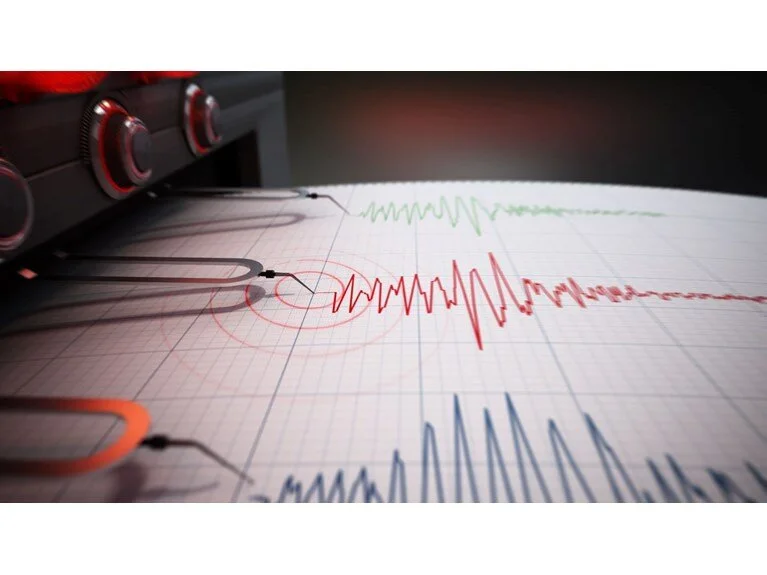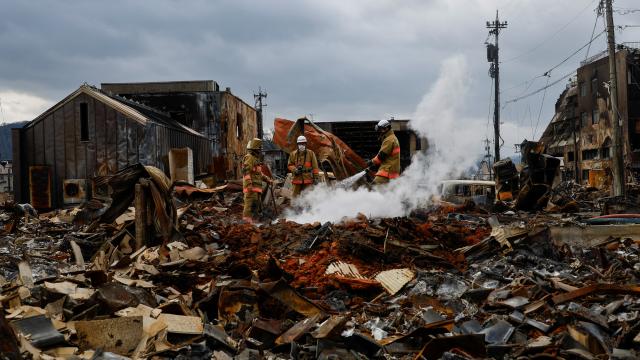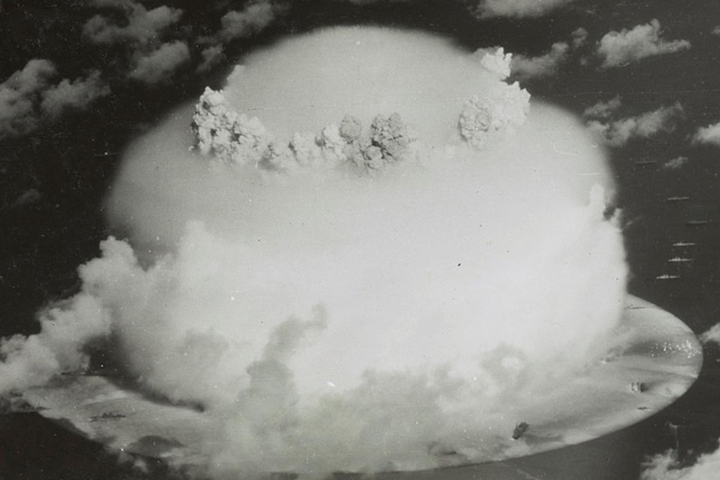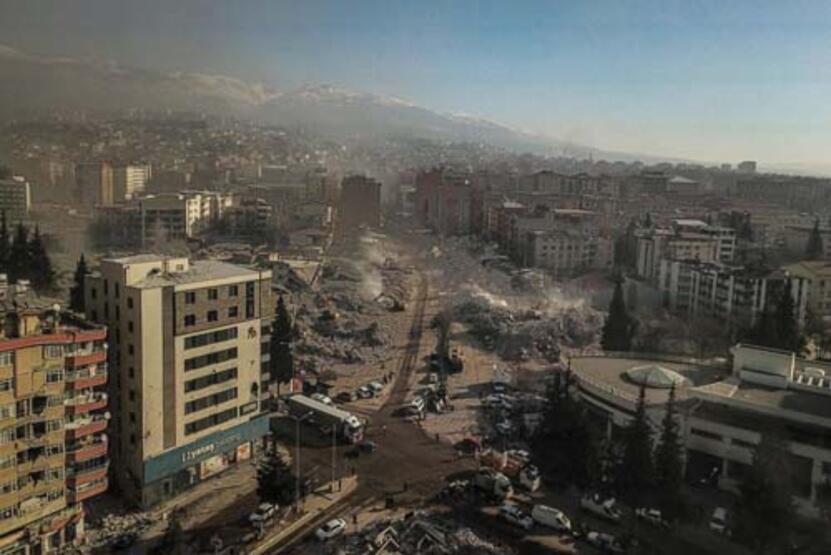According to the US Geological Survey (USGS), there are about 500,000 earthquakes in the world every year. Seismologists say that only 20 percent of these earthquakes are felt by humans and that about 100 earthquakes cause damage each year.
According to the US Geological Survey (USGS), there are about 500,000 earthquakes in the world every year. Seismologists say that only 20 percent of the tremors are felt by humans and that about 100 earthquakes cause damage each year. According to NASA, large earthquakes can shift the earth’s axis and thus change the length of a day.
Scientists believe that the 9.1 magnitude Sumatra earthquake in 2004 shortened the length of the day by 6.8 microseconds. Hundreds of thousands of people have lost their lives and millions have been left homeless in devastating earthquakes around the world in the last century. According to the USGS, the 10 most severe earthquakes in world history occurred in South America and Asia-Pacific countries.
STRONGEST EARTHQUAKE MAGNITUDE 9.5

The strongest earthquake in world history occurred in Chile on May 22, 1960.
As a result of the 9.5 magnitude earthquake, which was felt in an area of approximately 1000 kilometers, 1655 people lost their lives, 3 thousand people were injured and 2 million people were left homeless.
The tsunami, which caused 550 million dollars of damage in the country, spread over an area of 10 thousand kilometers and reached Hawaii, Japan and the Philippines. As a result of the giant waves, 61 people died in Hawaii, 138 in Japan and 32 in the Philippines.
The Alaska earthquake, recorded as the second most severe tremor, occurred on March 28, 1964.
The 9.2 magnitude earthquake, which lasted three minutes, triggered a tsunami. The tremor and the giant waves that followed caused 128 people to lose their lives and caused approximately 310 million dollars of damage.
INDONESIA EARTHQUAKE AFFECTS 14 COUNTRIES

To date, the longest lasting earthquake occurred in Sumatra on December 26, 2004. The 9.1 magnitude earthquake lasted about 10 minutes.
The giant waves of meters high waves formed as a result of the tremor affected 14 countries in Indonesia, as well as northern Asia and eastern Africa.
Approximately 230 thousand people lost their lives in the earthquake, which is considered one of the most fatal natural disasters. The earthquake and tsunami left 1 million 700 thousand people homeless.
The earthquake in the Tohoku region of Japan on March 11, 2011 was recorded as the strongest earthquake in the country to date. The 9-magnitude earthquake created a 1-kilometer fracture in the ocean floor, resulting in a tsunami on the northeast coast of the country.
In addition to the loss of 19 thousand lives caused by the earthquake and the subsequent tsunami, leakage occurred at the Fukushima nuclear power plant.
MAGNITUDE 9 EARTHQUAKE IN RUSSIA IN 1952
A magnitude 9 earthquake in Kamchatka in northeastern Russia on November 4, 1952 caused high waves off the coast of Hawaii.
An 8.8 magnitude earthquake in Chile on February 27, 2010 killed more than 500 people and injured thousands.
In addition to Chile, Latin American countries such as Peru, Ecuador, Colombia, Costa Rica and Panama were affected by the tsunami that followed the earthquake.
While 1.8 million people were victimized in the earthquake, which caused 30 billion dollars of damage, more than 500 thousand houses were damaged beyond repair.
Nearly 1000 people died in the 8.8 magnitude earthquake that occurred on January 31, 1906 near the coasts of Ecuador and Colombia. The tsunami generated after the earthquake crossed the ocean and reached Japan.
A magnitude 8.7 earthquake off Alaska’s Rat Islands on February 4, 1965 caused a tsunami with wavelengths of up to 10 meters.
TWO DEVASTATING EARTHQUAKES 3 MONTHS APART
While the wounds of the devastating 9.1 magnitude earthquake that struck Sumatra Island in northwestern Indonesia in December 2004 were being healed, a tremor of 8.6 magnitude was recorded about 3 months later on March 28, 2005, 30 kilometers underground.
While more than 1400 people lost their lives in the disaster, hundreds of people were injured due to the tsunami triggered by the earthquake.
At least 1500 people were killed in an 8.6 magnitude earthquake in Tibet on August 15, 1950. The earthquake, which also affected many cities in China and India, caused landslides. Hundreds of buildings were damaged as a result.
EARTHQUAKE ZONE PACIFIC RING OF FIRE
The Pacific Earthquake Belt, known as the “Ring of Fire”, is the source of 90 percent of all earthquakes and about 80 percent of major tremors in the world.
The earthquake belt surrounding the Pacific Ocean basin is known as the “Pacific Ring of Fire”.
The belt, which is about 40 thousand kilometers long, stretches from Chile northward along the coasts of South America, Central America, Mexico, the west coast of the United States and the south of Alaska to the Aleutian Islands, Japan, the Philippines, New Guinea, the South Pacific Islands and New Zealand.
“The second major earthquake belt, known as the “Alpine-Himalayan Earthquake Belt”, starts in Indonesia and runs from the Himalayas and the Mediterranean Sea to the Atlantic Ocean.
A large part of Turkey is also located in this earthquake belt.
NORTH AMERICA
North America has several major earthquake zones.
The central coast of Alaska, stretching north to Anchorage and Fairbanks, as well as the region along the coastline from British Columbia to Baja Mexico, where the Pacific plate and the North American plate are rubbing against each other, are experiencing earthquake activity.
The active earthquake zone in Mexico stretches from near the city of Puerto Vallarta to the Pacific coast on the border with Guatemala.
Much of the west coast of Central America, bordering the Cocos and Caribbean plates, is seismically active.
Another zone of activity on the continent is the arc from Jamaica to southeastern Cuba and between Haiti and the Dominican Republic (the Caribbean plate).
SOUTH AMERICA AND ASIA
The most active earthquake zones in South America, including the Caribbean coasts of Colombia and Venezuela, lie along the continent’s Pacific border.
In Asia, earthquakes are concentrated on the Australian plate, which wraps around the Indonesian archipelago, and in Japan, which lies between three continental plates.
In Central Asia, another of the world’s major earthquake zones, fault activity occurs in an area stretching from the eastern shores of the Black Sea southward to Iran and Pakistan, along the southern shores of the Caspian Sea.
EUROPE AND AFRICA

Northern Europe is far from major earthquake zones, with the exception of Iceland’s active volcanic activity zone.
The risk of earthquakes increases in the belt extending southeast towards Turkey and the Mediterranean coast (Alpine-Himalayan belt).
In Africa, which has far fewer earthquake zones compared to other continents because it is an old mass, earthquake activity is recorded in the Sahara, in the central part of the continent.
The eastern Mediterranean coast, especially Lebanon, where the Arabian plate borders the Eurasian and African plates, stands out as the most active regions.
The region near the Horn of Africa (around the Gulf of Aden) is another active area on the continent.
AUSTRALIA NEW ZEALAND ANTARCTICA

While the risk of earthquakes on the Australian continent is generally low or moderate, its small island neighbor New Zealand sits on top of one of the world’s active earthquake zones.
Compared to the other 6 continents, Antarctica has the least seismic activity. This is because very few of the continent’s land masses border or lie near the continental plates.
The only exception is the region around Tierra del Fuego in South America, where the Antarctic (South Pole) plate meets the Scotian plate.





